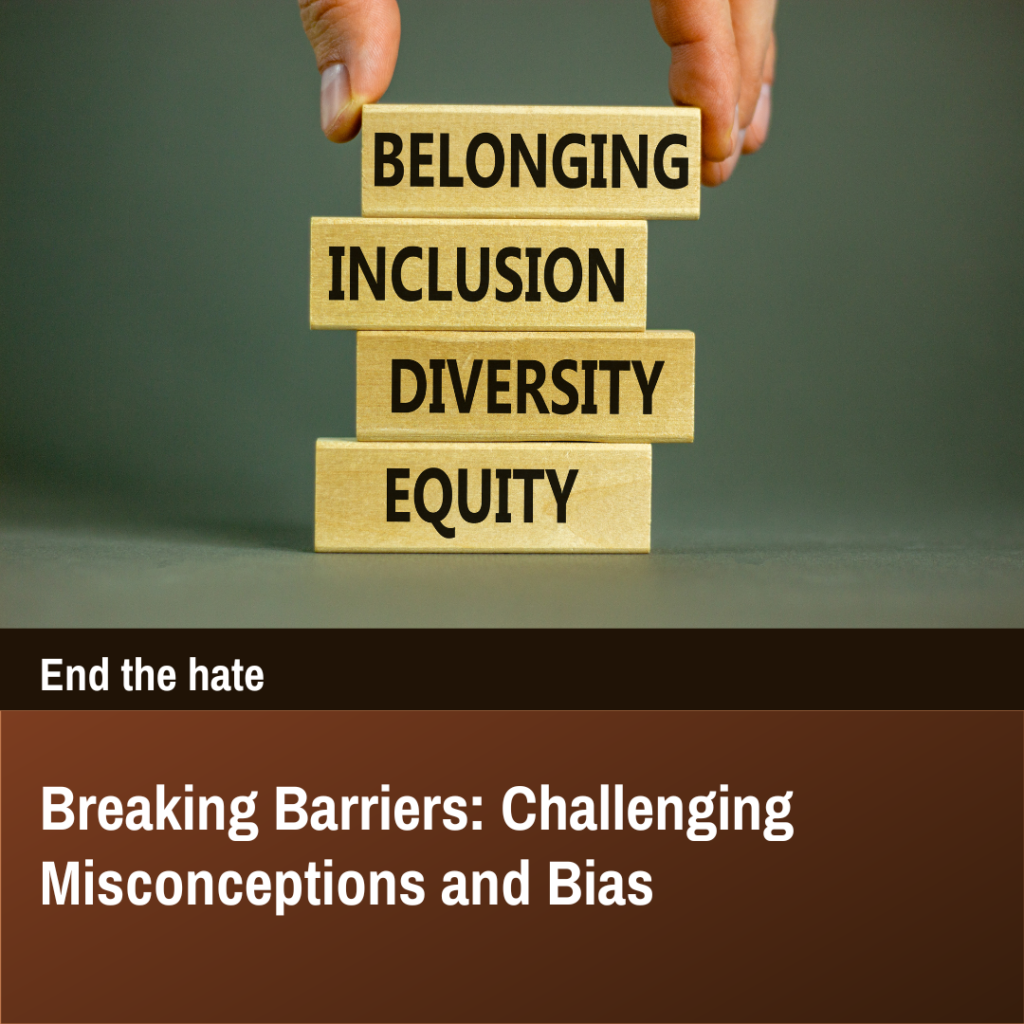Stereotypes, prejudice, and discrimination are pervasive social issues that affect individuals and societies worldwide. At ivyleagueassignmenthelp.com we help and guide students to understand these concepts and how addressing their root causes is crucial for fostering equality and social justice.
Introduction to Stereotypes, Prejudice, and Discrimination
Definitions and Distinctions
- Stereotypes are generalized beliefs about a group of people, often oversimplified and not based on individual differences.
- Prejudice involves preconceived opinions or attitudes about a group, often negative and not based on reason or actual experience.
- Discrimination refers to the unjust or prejudicial treatment of individuals based on their group membership.
Importance of Understanding These Concepts
Understanding stereotypes, prejudice, and discrimination is essential for addressing social inequalities, promoting diversity, and improving interpersonal and intergroup relations.

Theoretical Foundations
Social Identity Theory
Social Identity Theory, developed by Henri Tajfel, posits that individuals derive part of their identity from their group memberships, leading to in-group favoritism and out-group discrimination.
Realistic Conflict Theory
Realistic Conflict Theory suggests that prejudice and discrimination arise from competition over limited resources, leading to hostility between groups.
Social Cognitive Theory
Social Cognitive Theory emphasizes the role of observational learning, imitation, and social interactions in the development of stereotypes and prejudices.
Contact Hypothesis
The Contact Hypothesis, proposed by Gordon Allport, asserts that under certain conditions, intergroup contact can reduce prejudice and improve relations between groups.
Stereotypes
Definition and Formation
Stereotypes are formed through socialization, cultural norms, and media representations. They serve as cognitive shortcuts to simplify social perception but often lead to inaccurate and harmful generalizations.
Types of Stereotypes
Stereotypes can be based on various factors, including race, gender, age, religion, and socioeconomic status. They can be positive or negative but generally oversimplify complex individual characteristics.
Cognitive Functions of Stereotypes
Stereotypes help individuals quickly process and categorize social information. However, they can lead to biased judgments and reinforce social inequalities.
Impact of Stereotypes on Behavior
Stereotypes influence behavior by shaping expectations and interactions. They can lead to stereotype threat, where individuals perform poorly due to anxiety about confirming negative stereotypes.
Prejudice
Definition and Characteristics
Prejudice is a preconceived judgment or attitude toward a group, often based on stereotypes and leading to negative evaluations and hostility.
Emotional and Cognitive Components
Prejudice involves both emotional responses (e.g., fear, dislike) and cognitive beliefs (e.g., stereotypes). These components reinforce each other and contribute to discriminatory behavior.
Sources of Prejudice
Prejudice arises from various sources, including upbringing, socialization, cultural norms, and personal experiences. It is also influenced by economic and political factors.
Consequences of Prejudice
Prejudice leads to social exclusion, discrimination, and conflicts. It negatively impacts mental health, social cohesion, and economic opportunities for affected individuals.
Discrimination
Definition and Forms
Discrimination is the unfair treatment of individuals based on their group membership. It can be direct (overt actions) or indirect (policies that disproportionately affect certain groups).
Institutional Discrimination
Institutional discrimination involves policies and practices within organizations and institutions that systematically disadvantage certain groups.
Interpersonal Discrimination
Interpersonal discrimination occurs in everyday interactions and includes actions such as exclusion, verbal harassment, and differential treatment.
Impact on Individuals and Society
Discrimination leads to disparities in education, employment, healthcare, and criminal justice. It perpetuates social inequalities and undermines social cohesion.
Causes and Maintenance of Stereotypes, Prejudice, and Discrimination
| Cause | Description |
|---|---|
| Cognitive Biases | Cognitive shortcuts and biases, such as confirmation bias and the fundamental attribution error, contribute to the formation and maintenance of stereotypes and prejudices. |
| Socialization and Cultural Norms | Socialization processes and cultural norms transmit and reinforce stereotypes and prejudices across generations. |
| Media Influence | Media representations often perpetuate stereotypes and biases, influencing public perceptions and attitudes. |
| Economic and Political Factors | Economic competition and political rhetoric can exacerbate prejudice and discrimination by fostering intergroup tension and conflict. |
Reducing Stereotypes, Prejudice, and Discrimination
Education and Awareness Programs
Education and awareness programs aim to inform individuals about the harmful effects of stereotypes and prejudices, promoting empathy and understanding.
Intergroup Contact
Intergroup contact, under conditions of equal status, common goals, and institutional support, can reduce prejudice by fostering positive interactions and relationships.
Legislation and Policy
Legislation and policies that promote equality and protect against discrimination are crucial for addressing systemic biases and ensuring fair treatment.
Community and Organizational Initiatives
Community and organizational initiatives, such as diversity training and inclusive practices, help create environments that value and respect diversity.
Stereotypes, Prejudice, and Discrimination in Different Contexts
Workplace
In the workplace, stereotypes and prejudice can lead to hiring biases, unequal opportunities, and a hostile work environment. Diversity and inclusion initiatives are essential for addressing these issues.
Education
In educational settings, stereotypes and discrimination affect student performance, access to resources, and educational outcomes. Inclusive teaching practices and policies help mitigate these impacts.
Healthcare
In healthcare, stereotypes and prejudice can result in disparities in treatment, diagnosis, and patient care. Culturally competent care and anti-bias training are critical for improving healthcare equity.
Criminal Justice System
In the criminal justice system, biases lead to disparities in policing, sentencing, and incarceration rates. Reforms and training are necessary to ensure fair and just treatment for all individuals.
Case Studies and Research Findings
Historical Examples
Historical examples, such as the Civil Rights Movement and the fight against apartheid, highlight the struggles and successes in combating stereotypes, prejudice, and discrimination.
Contemporary Studies
Contemporary studies explore current issues and trends in prejudice and discrimination, providing insights into ongoing challenges and effective interventions.
Cross-Cultural Research
Cross-cultural research examines how stereotypes, prejudice, and discrimination manifest in different cultural contexts, enhancing our understanding of universal and culture-specific dynamics.
Psychological and Social Effects
Mental Health Impacts
Experiencing prejudice and discrimination negatively affects mental health, leading to stress, anxiety, depression, and decreased self-esteem.
Social and Interpersonal Effects
Prejudice and discrimination strain social relationships, reduce social cohesion, and increase conflict. They hinder effective communication and cooperation across groups.
Economic Consequences
Discrimination limits economic opportunities and perpetuates income and wealth disparities, affecting both individuals and broader economic development.
Future Directions in Research
Emerging Trends
Emerging trends in research include the study of intersectionality, the impact of digital and social media on prejudice, and the effectiveness of virtual reality in reducing biases.
Technological Advances in Research
Technological advances, such as neuroimaging and machine learning, provide new tools for understanding the neural and cognitive underpinnings of stereotypes, prejudice, and discrimination.
Policy Implications
Research findings inform policies aimed at reducing discrimination and promoting equality, emphasizing the need for evidence-based approaches and continuous evaluation.
FAQs about Stereotypes, Prejudice, and Discrimination
What are stereotypes?
Stereotypes are generalized beliefs about a group of people, often oversimplified and not based on individual differences.
How do prejudice and discrimination differ?
Prejudice involves negative attitudes or judgments about a group, while discrimination refers to the unjust treatment of individuals based on their group membership.
What causes stereotypes and prejudice?
Stereotypes and prejudice are caused by cognitive biases, socialization, cultural norms, media influence, and economic and political factors.
How can stereotypes, prejudice, and discrimination be reduced?
Effective strategies include education and awareness programs, intergroup contact, legislation and policy, and community and organizational initiatives.
What is the impact of discrimination on individuals and society?
Discrimination negatively impacts mental health, social cohesion, and economic opportunities, perpetuating social inequalities and hindering social progress.
How can research inform policies to reduce discrimination?
Research provides evidence-based insights into the causes and effects of discrimination, helping to develop and evaluate policies that promote equality and protect against bias.
Conclusion
Summary of Key Points
Understanding and addressing stereotypes, prejudice, and discrimination are crucial for promoting social justice and equality. By recognizing the causes and impacts of these issues, we can develop effective strategies to reduce biases and foster inclusive societies.
Final Thoughts on Addressing Stereotypes, Prejudice, and Discrimination
Combating stereotypes, prejudice, and discrimination requires a multifaceted approach involving education, policy, and community efforts. Continuous research and commitment to social justice are essential for creating a more equitable and inclusive world.

